How to Make Timber Work in the Bathroom
It may look beautiful, but is timber really a good idea with all that water around? Done right, it can be
Now that we’ve elevated bathrooms in status – we want them to refresh and soothe us, not just provide us with a place to get clean – we’re looking to natural materials, such as timber, to help them take on a spa-like look and feel. But doesn’t most cut timber warp and swell when it gets wet? It sure does. That’s why it pays to play it smart with the timber you use for this suddenly important room of the house. We’ve consulted the experts to share their tricks of the timber-in-bathrooms trade.
High-quality engineered timber flooring can be used anywhere in bathrooms outside the shower area, and is becoming more popular by the day.
“It’s nice underfoot, it’s warm and slip resistant, and it looks and smells natural and raw,” says Milling. “People don’t always want something glossy and shiny; they want something more organic.”
“It’s nice underfoot, it’s warm and slip resistant, and it looks and smells natural and raw,” says Milling. “People don’t always want something glossy and shiny; they want something more organic.”
Darren Genner, director of boutique bathroom design company, Minosa, uses four different tactics to incorporate timber into a bathroom. The first is using recycled hardwood.
“If you use young timber you get a lot of movement and flexibility with it,” Genner says. “You’ll get cupping and lateral movement and, in an environment that’s wet, that’s not a good thing.”
Recycled hardwood that’s lived a little, on the other hand, is denser and far more stable. “You’re not going to get a lot of movement out of it,” Genner adds. “We piece timber panels together and biscuit join them, then use a natural oil on top.” The recycled timber used in this bathroom delivers both the warmth the owners wanted and the stability to keep it looking good over time.
“If you use young timber you get a lot of movement and flexibility with it,” Genner says. “You’ll get cupping and lateral movement and, in an environment that’s wet, that’s not a good thing.”
Recycled hardwood that’s lived a little, on the other hand, is denser and far more stable. “You’re not going to get a lot of movement out of it,” Genner adds. “We piece timber panels together and biscuit join them, then use a natural oil on top.” The recycled timber used in this bathroom delivers both the warmth the owners wanted and the stability to keep it looking good over time.
The second tactic used at Minosa is relying on a timber lookalike to deliver the goods. “You can get really good prints now; they look for all money like they’re real,” Genner says.
In this bathroom, a high-pressure laminate on a substrate (examples include ply, chipboard or MDF) and mitred edges was used by the team at Minosa to make it look like timber. “The reason we use high-pressure laminate is for durability. It can handle the steam and the day-to-day use; it’s very tough,” Genner explains.
In this bathroom, a high-pressure laminate on a substrate (examples include ply, chipboard or MDF) and mitred edges was used by the team at Minosa to make it look like timber. “The reason we use high-pressure laminate is for durability. It can handle the steam and the day-to-day use; it’s very tough,” Genner explains.
In this bathroom, the team at Minosa applied a timber veneer on the wall unit’s doors. “The main point with open-plan bathrooms like this is a great extraction system,” Genner says. “There are some wonderful ones on the market that pull the air out of the space and are silent in their action.”
Genner’s fourth tactic is using engineered timber. Such timber, as we learned earlier, incorporates 5-8mm of hardwood on the top and bottom layers and a softwood layer in between. Engineered timber for flooring is widely available in Australia, and some can even be installed yourself – just make sure it’s suitable for bathrooms before making the move.
Genner’s fourth tactic is using engineered timber. Such timber, as we learned earlier, incorporates 5-8mm of hardwood on the top and bottom layers and a softwood layer in between. Engineered timber for flooring is widely available in Australia, and some can even be installed yourself – just make sure it’s suitable for bathrooms before making the move.
Japanese Hinoki is often used to construct traditional Asian baths such as this one. Hinoki, a Japanese cypress wood, is left in its natural state so it can breathe and release aromatic oils during a bath. Wiping it dry after use and making sure there’s enough ventilation in the room is usually all it takes to maintain its condition.
More: 20 Inspiring Asian-Style Bathrooms
More: 20 Inspiring Asian-Style Bathrooms
Although bathroom designers stop short of using timber inside showers, there’s nothing to stop you using it as wall panelling on the outside. The cedar-planked wall divider here is flanked by glass doors leading to the shower and toilet. If solid timber is being used for wall panelling, each length is usually sealed with polyurethane on the front, sides, and back so moisture can’t easily get into the grains. Multiple coats are also applied after installation.
Timber works well with just about any colour, too. The natural tones in these pebble floor tiles blend in seamlessly with the vanity. As Genner says: “In bathrooms, it’s the natural element that appeals, the feeling of a day spa, feeling warm, rejuvenated and connected to nature.”
More: Find a Bathroom Vanity That Suits the Way You Live
More: Find a Bathroom Vanity That Suits the Way You Live
This modern bathroom is all the more inviting for its timber vanity, shelving and window frames, not to mention that adorable little stool.
See more of this gorgeous Melbourne home
See more of this gorgeous Melbourne home
This solid timber vanity pairs beautifully with the white used elsewhere in the bathroom. Again, the window frame echoes the warm timber tones of the vanity.
Bamboo is becoming more popular by the day for people wanting the warmth of timber in a more sustainable form.
TELL US
How does the timber hold up in your bathroom? Share your experiences in the comments section.
MORE BATHROOM IDEABOOKS
Think Like a Designer: 5 Steps to a Well-Planned New Bathrooom
How to Update Your Bathroom Without a Sledgehammer
How to be Bold (and Beautiful!) in the Bathroom
Dream Spaces: 14 Amazing Indoor-Outdoor Bathrooms
How does the timber hold up in your bathroom? Share your experiences in the comments section.
MORE BATHROOM IDEABOOKS
Think Like a Designer: 5 Steps to a Well-Planned New Bathrooom
How to Update Your Bathroom Without a Sledgehammer
How to be Bold (and Beautiful!) in the Bathroom
Dream Spaces: 14 Amazing Indoor-Outdoor Bathrooms




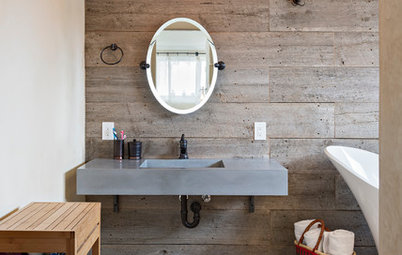
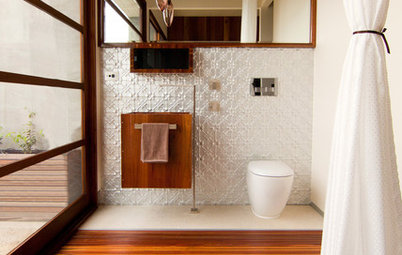
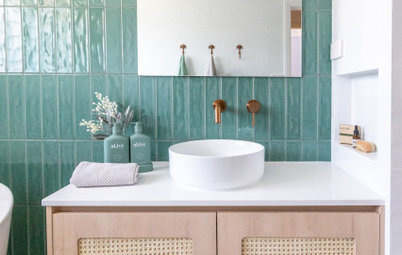
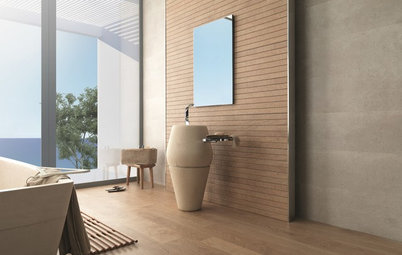
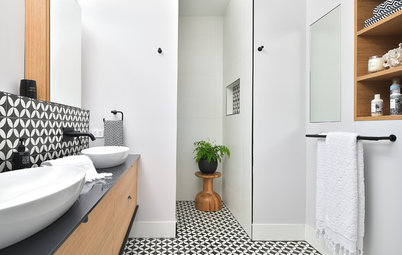
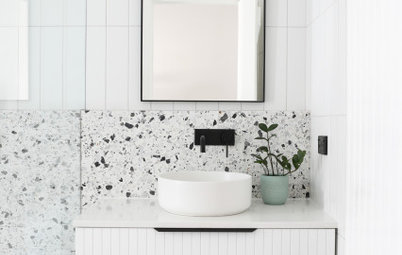
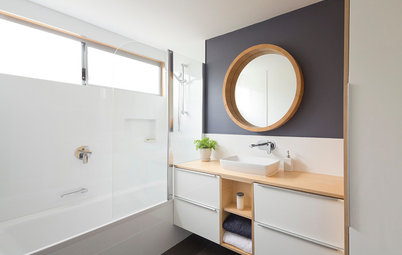
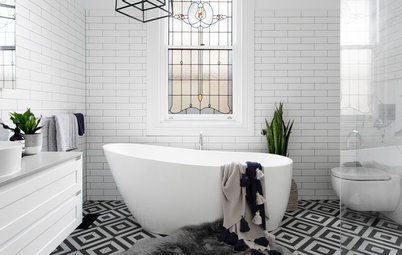
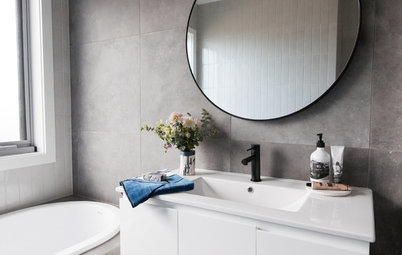
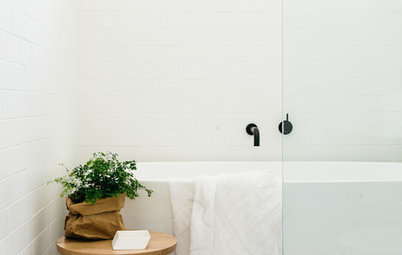
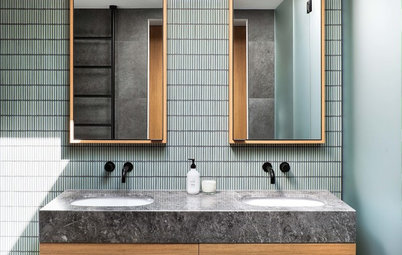
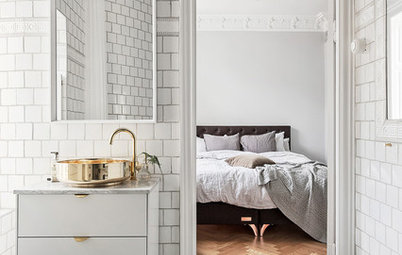
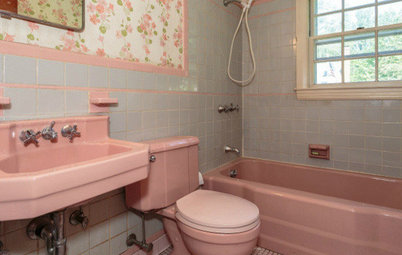
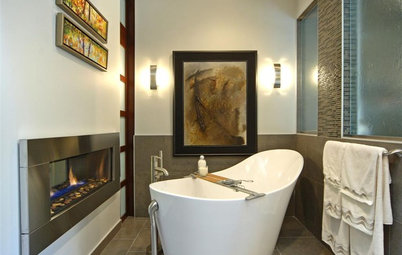
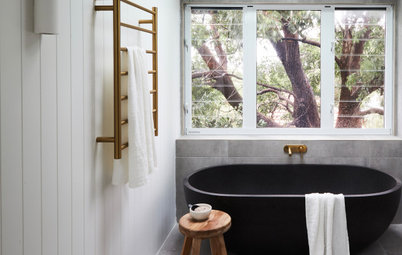

Water can even get into timber that’s coated with wax or polyurethane. “If the water penetrates that surface coating, the moisture becomes trapped underneath and the timber can’t regulate its own moisture level – it swells and expands and buckles,” says Milling. “It’s all about regulating moisture in and moisture out.” The coating can also delaminate as a result.
This bathroom features Mafi flooring, showcasing an Austrian engineered timber able to withstand moisture in bathrooms. Mafi floorboards feature a strong, three-layer construction with the same species of wood on the top and bottom, and a fast-growing (and, therefore, a renewable resource) softwood layer in between to hold it all together. “Softwood is flexible so it accommodates movement in the top and bottom; otherwise it’s too rigid,” explains Milling.